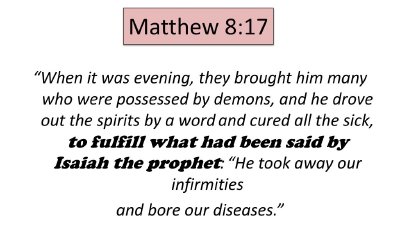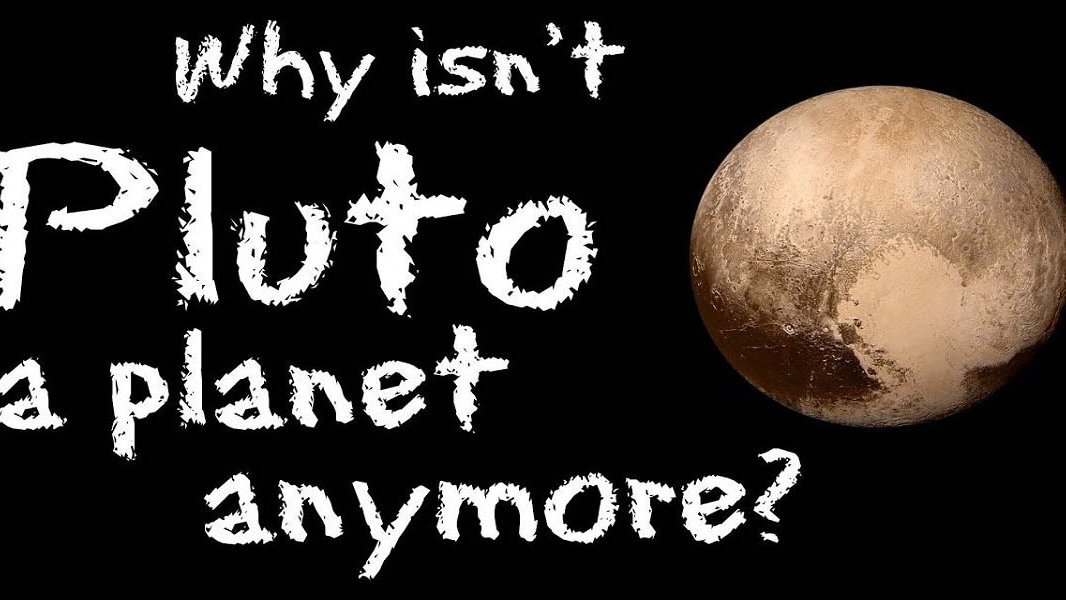Next week marks a sad day. I don’t remember when exactly, but I remember what I felt when I heard about it. August 24, 2006 was the day that the International Astronomical Union (IAU) demoted Pluto from its full planetary status. It was henceforth to be known as a “dwarf planet.” Is it possible to feel bad for a planetary body?
I felt a similar thing when I realized that most New Testament scholars believe that Matthew was not the first Gospel written, but Mark (despite what early church tradition suggests). I kind of felt bad for Matthew—I felt he had been demoted!
It is known as the “priority of Mark,” but that doesn’t mean that Mark is any better, or more important, or more reliable; it simply means that it is believed to be the first written. (The whole issue has to do with what has become known as the “synoptic problem”—trying to figure out the literary relationship between the first three Gospels, which share a similar viewpoint.)
Several early church fathers suggested that Mark was a scribe for, and wrote a memoir of, Peter—recording much of his preaching in written form. (The disciples do come off as rather thick-headed in Mark.)
Mark begins his work rather abruptly: “The beginning of the good news about Jesus the Messiah, the Son of God…” His portrait is the shortest of the four and focuses on Jesus as the suffering servant of God. Jesus’ passion (his final week) takes up fully one-third of Mark’s Gospel. We read in Mark one of just a few statements in the Gospels that could be considered a “mission statement.” “…Instead, whoever wants to become great among you must be your servant, and whoever wants to be first must be slave of all. For even the Son of Man did not come to be served, but to serve, and to give his life as a ransom for many” (10:43-45).
What kind of a mission statement is that? How do we, as followers of Jesus “follow” that? If that is indeed our calling, how are we doing?

Jesus, according to Mark
August 17, 2022 • Ed Green • Mark 10:43–45


Jesus, according to John
August 19, 2022 • Ed Green • John 20:30–31, John 10:14–18, John 1:1
Do you remember the Sesame Street song that goes, “One of these things is not like the other”? If you have ever read the Gospels, you quickly realize that John’s Gospel is quite different from the other three. Clement of Alexandria (an early church father of the late second/early third century) represents an ancient tradition when he wrote that “Last of all John, perceiving that the external facts had been set forth in the Gospels, at the insistence of his disciples and with the inspiration of the Spirit, composed a spiritual Gospel.” Now I don’t know exactly what Clement meant by “spiritual” Gospel, but I do recognize that John is writing from a completely different perspective. (I cracked up when I saw the meme with Tiger Woods and John Daly that highlights this…) If Matthew and Luke record Jesus’ family tree, John goes ALL THE WAY BACK: “In the beginning was the Word” (1:1). John highlights Jesus’ relationship with the Father, the work of believing (the noun “faith” doesn’t show up), and eternal life (rather than the kingdom of God, like the Synoptic Gospels). Alone of all the Gospels, John provides a purpose statement: “Jesus performed many other signs in the presence of his disciples, which are not recorded in this book. But these are written that you may believe that Jesus is the Messiah, the Son of God, and that by believing you may have life in his name” (20:30-31). Trying to nail down one theme of John is difficult, but I would suggest it is just that: LIFE. Here are some of the passages that convince me: John 1:4; 3:14-16; 4:13-14, 36; 5:20-21, 24-26, 39-40; 6:28-58, 66-69; 10:10, 28; 11:25-26; 12:25, 50; 14:6; 17:2-3; 20:30-31. Life. In the beginning, God breathed life into all living things, and especially to humanity, who were to represent him in his world. We messed that up and death came into God’s good creation. But in Jesus, we regain that life we were meant to have. But at what cost? It cost him his life (10:14-18).


Jesus, according to Luke
August 18, 2022 • Ed Green • Luke 4:14–21
I wrote my master’s thesis from the first few chapters of Luke, and it has been my favorite Gospel ever since. Luke (whom Paul would later call a physician) wrote the two-volume work, often referred to as “Luke-Acts.” You can see this is the case by reading the first verses of both Luke and Acts. Luke presents Jesus as the Lord, the son of man, and savior of all humanity. In Matthew’s genealogy of Jesus, he goes back to Abraham; Luke goes all the way back to Adam, “the son of God” (3:23-38). Luke, more than the other Gospels, highlight the Holy Spirit, prayer, and Jesus’ concern for those on the margins of society. Yesterday, I mentioned Mark 10:45 as a possible mission statement of Jesus. In my opinion Luke records more fully Jesus’ mission as he understood it, in 4:18-21. The occasion is Jesus reading the Scripture and preaching in his hometown synagogue in Nazareth... Jesus returned to Galilee in the power of the Spirit, and news about him spread through the whole countryside. He was teaching in their synagogues, and everyone praised him. He went to Nazareth, where he had been brought up, and on the Sabbath day he went into the synagogue, as was his custom. He stood up to read, and the scroll of the prophet Isaiah was handed to him. Unrolling it, he found the place where it is written: “The Spirit of the Lord is on me, because he has anointed me to proclaim good news to the poor. He has sent me to proclaim freedom for the prisoners and recovery of sight for the blind, to set the oppressed free, to proclaim the year of the Lord’s favor.” Then he rolled up the scroll, gave it back to the attendant and sat down. The eyes of everyone in the synagogue were fastened on him. He began by saying to them, “Today this scripture is fulfilled in your hearing.” (4:14-21) The sermon began well but ended with the good people of Nazareth running Jesus out of town. Sometimes we think we know what God is up to and we are woefully mistaken. If this is really what Jesus said he was all about, then what do we learn from this passage?


Jesus, according to Matthew
August 16, 2022 • Ed Green • Matthew
Technically, the four Gospels are anonymous. We don’t actually know who wrote them, but from very early on, church tradition attached these four names to the Gospels in our Bible: “The Gospel according to…” Matthew, Mark, Luke, and John. And there are good reasons to believe the traditional authors actually did write them. Each one is written from a different perspective, within a specific context, and for a particular purpose. Back in 1988 there was a little pamphlet that was sent to churches across the country by a man named Edgar Whisenant. It was titled “88 Reasons Why the Rapture Is In 1988.” When it didn’t happen that year, guess what? In 1989 he wrote, “The Final Shout: Rapture Report 1989,” and admitted he had miscalculated…by one year. One of the marks of a true prophet, according to Scripture, is that when he or she speaks of the future, the event actually comes true (Deuteronomy 13). When Matthew wrote his mini-biography of Jesus, his agenda was to present Jesus as the promised Messiah and King predicted in the Jewish Scriptures (our Old Testament). Fulfillment is Matthew’s way of proving this; fifteen times he uses the verb “fulfill.” He consistently presents Jesus as fulfilling what was spoken through the prophets. Matthew presents Jesus as the promised anointed king—but not just any king. Israel’s true king. God’s king, Immanuel (see Isaiah 7:14 and Matthew 1:22-23). How does the truth that Jesus fulfilled all these prophecies impact your faith? How does it help you to remember that the whole of Scripture is a story about what God has been up to since the beginning?


